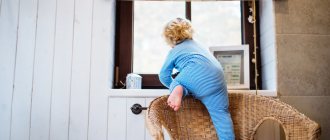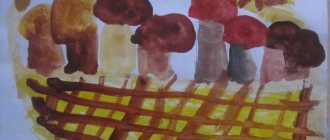Summary of the conversation on the topic “Dangerous objects” (senior group)
Transcript
1 Municipal budgetary preschool educational institution “Kindergarten 13” Summary of the conversation on the topic “Dangerous objects” (senior group) Completed by: teacher Asanova E.S. Sasovo, 2016
2 Goal: to strengthen children’s understanding of life-threatening objects that they encounter in everyday life, their necessity for humans, and the rules for using them. Objectives: Educational: To give an idea about objects that are dangerous to the life and health of children that they encounter in everyday life. Help yourself, draw conclusions about the consequences of careless handling of such items. Activate the names of objects in speech. Developmental: Develop speech, thinking, as well as a sustainable interest in learning about the world around us. Educational: To develop independence, responsibility, and the ability to work in a team. Methodological techniques. Visual: Use of illustrations, examination of dangerous objects for children's health, observation. Verbal: Explanation, conversation, story, solving riddles. Gaming: didactic games. Forms of organizing children in the classroom: frontal, individual. Technical support: easels, magnetic board Demonstration and handouts: pictures of furniture, electronic tablet with the presentation “Riddles” Expected result: to develop the ability to avoid potentially dangerous situations in everyday life, mastering the algorithm of correct actions in the event of a dangerous situation, increasing motivation to maintain one’s health, manifestation of emotional responsiveness, development of free communication with adults and peers, activation of children’s mental activity. Progress of the lesson: Guys, you are already adults. Which one of you did your parents leave at home alone? (Children's answers)
3 If you have already been alone at home, then you need to know the safety rules. What dangers might there be at home? Dangers await us at every step. Now we will try to determine which objects in the house can be considered dangerous. Presentation “Riddles”: They are different: Dumb and sharp, Children and adults. (Scissors) People always use me, Even though my character is cool. Where I need to hit, I will come, After all, my shock work. (Hammer) Thin and nimble, makes friends with thread, flies up and down, sews and sews. (Needle) She gnawed and bit the board, threw crumbs on the floor, but didn’t eat a single piece, you know, the board is tasteless (Saw). Here comes the steamer, back and forth, and behind it is such a smooth surface, not a wrinkle to be seen. (Iron) He swallows indiscriminately. Everything that lies in the way. If there is a lot of dust, litter
4 He trembles all over with joy. (Vacuum cleaner) On the table, in a cap Yes, in a glass bottle A friend has settled in A cheerful light (Table lamp) Look at my barrel, A top is spinning inside me, It doesn’t hit anyone, But it will knock everything down (Mixer) Two neighbors of the wheel Collect votes from each other they themselves pull the belt with the voices. (Tape recorder) Look at me, I’m all full of holes, But I deftly rub your carrots (Grater) I have a sharp, iron blade, Handle with care, I can cut myself (Knife) He puffs like a steam locomotive, It’s important to hold his nose up. He'll make some noise, calm down, and invite the seagull to drink. (Teapot) (Children guess riddles, tell what danger each object is fraught with)
5 Well done guys, you noticed very well all the dangers in objects. Now take a close look at this apartment. (I show an illustration with a drawn apartment in which various household items are located.) Children Sasha and Katya were left in this apartment. Their parents went to work. Let's, guys, tell the kids what items they can't use on their own so that trouble doesn't happen. (Each child takes one of the illustrated pictures and tells the little dolls what the danger of the object is.) Then he hangs the picture in the room where this item is supposed to be located. Guys, let's repeat the safety rules: 1. All sharp, piercing and cutting objects must be put in their place. Order in the house is not only for beauty, but also for safety. 2. Do not turn on electrical appliances; they may cause electric shock or cause a fire. Don't put your finger in the socket. Neither girl nor boy! 3. Never try any medications. Firstly, it is not tasty, and secondly, medicine taken incorrectly can be poisonous. 4. Do not touch household chemicals: washing powders, dishwashing detergents, soda, bleach, cockroach repellents. So that trouble does not happen, as in the poem. Remedy for cockroaches Giants lived in a house, And cockroaches lived in a house. What to do, how to be here? Kill the cockroaches! And the giants bought a remedy against cockroaches, but the cockroaches remained, and there were no more giants. You have to be more careful so as not to poison yourself.
6 5. You can be poisoned by medicines and chemicals, but you can also be poisoned by an invisible poison gas. Gas can be dangerous. Therefore, if you smell gas, follow these rules. Tell the adults about this immediately. You must open the doors and windows immediately. Call “04” Under no circumstances turn on the light or light a match. Turn off the gas in the apartment You need an eye and an eye for gas. Feeling the smell in the apartment, call “04” 6. If you live in a multi-storey building, another danger awaits you. this is a balcony. It is very dangerous to go out on the balcony alone. But if you go out, never play outdoor games, do not jump, do not lean over the balcony railing. If there is something interesting below, it is better to go down the stairs. A man is not a bird, it is more convenient to go down the stairs. Without a parachute, only cats jump from a height. Remember, children, these rules and feel free to stay at home alone, no harm will happen to you!
Dangerous objects at home (conversation) material on the topic
Lesson summary. "Dangerous items at home"
Goal: to strengthen children’s understanding of objects that are dangerous to life and health that they encounter in everyday life, about their necessity for humans, and about the rules for using them.^ Progress of the lesson - Guys, you are already adults. Which one of you did your parents leave at home alone? (children's answers) -If you have already been left alone at home, then you need to know the safety rules. What dangers can there be at home7 Dangers await us at every step. Now we will try to determine which objects in the house can be considered dangerous. Guess riddles about household items and think about how they can be dangerous.
1. Two rings, two ends, and in the middle there are nails. (scissors) 2. I don’t want to be silent, let me knock as much as I can. And he knocks every day with his iron head. (hammer) 3. Children guess riddles, tell what danger every household item is fraught with
-Well done, guys, you noticed very well all the dangers in objects. Now look carefully at this picture. (The teacher offers the children an illustration with a painted apartment in which various household items are located.) Children Andryusha and Natasha were left in this apartment. (The teacher presents the dolls to the children)
-Their parents went to work. Let's, guys, tell the kids what items they can't use on their own so that trouble doesn't happen. We will put warning signs near each item: X - cannot be used, ! - use carefully. (Children place signs around the apartment) - Guys, let's repeat the safety rules:
1. All sharp, piercing and cutting objects must be put in their place. Order in the house is not only for beauty, but also for safety. 2. Do not turn on electrical appliances; they may cause electric shock or cause a fire. 3. Never try any medications. Firstly, it is not tasty, and secondly, medicine taken incorrectly can be poisonous. 4. Do not touch household chemicals: washing powders, dishwashing detergents, soda, insect repellents.
Cockroach repellent. Giants lived in the house, And cockroaches lived in the house. What to do, how to be here? - Kill the cockroaches! And the giants bought a remedy against cockroaches... But there were cockroaches left, and there were no more giants. You have to be more careful so as not to poison yourself.
- You can be poisoned not only by medicines and chemicals, but you can also be poisoned by an invisible poison - gas. Gas can be very dangerous. Therefore, if you smell gas, follow these rules: -Tell adults about this urgently, you must immediately open windows and doors, call “04”, and under no circumstances turn on the light or light a match. -If you live in a multi-storey building, another danger awaits you - this is a balcony. It is very dangerous to go out on the balcony alone.
A person is not a bird, it is more convenient to go down the stairs, Without a parachute, only cats jump from heights.
-Remember, children, these rules and feel free to stay at home alone, no harm will happen to you. -Now, I think, our kids Andryusha and Natasha will be safe. And you guys, if you learn something new, be sure to tell them.
^ Conversation - “An open window, a balcony as a source of danger” I would like to draw your attention to the fact that open windows and balconies pose a particular danger indoors. Children should not be left alone in a room with an open window, balcony, go out onto the balcony without an adult, or approach an open window. I conduct a conversation with children on the topic “Balcony, open window.” -If you live in a multi-storey building, another danger awaits you. This is a balcony. It is very dangerous to go out on the balcony alone. But if you go out, never play outdoor games there, don’t jump, don’t lean over the balcony railing. If there is something interesting below, it is better to go down the stairs. We look at the image of an open window with the children. Why is an open window dangerous? Do parents at home allow their children to open the windows themselves and look out of them, to go out onto the balcony alone and play there? Together with the children, we draw a plan of our apartment and mark dangerous places on it. We make a room layout with the children (windows, doors, balcony, floor lamp, chairs, telephone, etc.). We make figures of current characters - mothers, children. The room layout can be used in different ways: as a tabletop theater in which children can act out a story on a proposed topic, for example: “Mom left for a while, and the children were left alone at home...”, and each child can offer his own story or act it out with peers in pairs , three of us. I suggested coming up with a story together with my parents at home. To develop the creative imagination and imagination, artistic abilities of children, they can be asked to invent and add characters and objects to the room in accordance with the increasingly complex plot (for example: a thief and a policeman, a doctor, a fireman). A man is not a bird, It is more convenient to go down the stairs. Without a parachute, only cats jump from a height.
Remember, children, these rules and feel free to stay at home alone, no harm will happen to you.
^ Lesson summary “Where does fire work?” Purpose: to introduce the life of an ancient man, talk about man’s discovery of fire; how fire has reached our days, how it helps people.
^ Progress of the lesson: - Guys, you already know that a person’s life has not always been the same as it is now. A long time ago, people used only what nature itself provided. Caves served as shelters, where it was cold, damp, and dark. -Once upon a time a tree caught fire due to lightning. Someone, probably the bravest person, thought of taking the burning branch and taking it to his cave. -Guys, what do you think the fire in the cave was for? (children’s answers) But in order for the fire not to go out, you need to do (put branches, protect from the wind, from the rain...) But it happened that the fire went out and it was necessary people wonder how fire is made. Someone noticed that when one stone is treated with another, sparks appear. So people began to strike sparks with stones and light a fire when they needed it. We still use the knowledge of ancient people. For example, in a lighter. This stone is called flint. As soon as fire made friends with a person, it became his faithful assistant. (fire-signal, lighting, fire in a forge, fire in the furnace of a steam locomotive.
-Let's play the game “What Was - What Has Become” (I hand out cards with modern and ancient objects to the children) Find a pair. And today fire is our faithful assistant. -Which of you guys wants to tell you how fire helped you? (children's stories) -Which of you made a fire with your parents? And then what happened to the fire? What's left at the site of the fire? -Fire is our friend, but we must be careful with it. A little gape, the wind will blow and spread sparks throughout the forest. Then troubles cannot be avoided. The fire burns everything in its path in a few minutes. The fire spares neither nature, nor animals, nor people, and leaves behind a terrible trail: instead of a forest there is ash, instead of a house there are burnt brands. Fire can be not only a friend, but also an enemy. And yet, the benefits of fire are greater than the harm. Fire helps people every day, makes our lives more interesting, warmer, more comfortable. Fundamentals of life safety for children and adolescents on the street and at home. “My home is my castle,” says the famous saying. But even in the most reliable “fortress” a child faces many dangers: more and more household appliances are appearing, home equipment is becoming more and more complex, and the “arsenal” of household chemicals is constantly expanding. As soon as he is born, the baby begins to explore the world. His curiosity knows no bounds. Therefore, when a child begins to crawl and then walk, he needs special supervision. It would never even occur to an adult, for example, to stick a nail into a power socket or light a fire in a room or kitchen. But a child can do it out of mischief or curiosity. A child, left without adult supervision, is capable of carelessly opening the tap of a gas stove, inadvertently falling out of an open window, or trying grandma’s medicine out of curiosity. All this causes severe injuries or even death. A study of the causes of injuries in children shows that most often they occur through the direct or indirect fault of adults. Parents should remember that the vaccine against injury is education. In order to raise a child and instill in him the rules of safe behavior at home, adults themselves must know and follow them. Already in early childhood, the child should be given a clear understanding of what he can and cannot do. The whole question is how best to do this. With constant prohibitions, adults limit the child’s activities and restrain the natural needs of a growing person for continuous movement and high activity. Constant “no” will sooner or later give the opposite result. It's better to use a different tactic. For example, fire is very attractive to children. And if a child approaches the fire and wants to touch it, he must be warned about the danger, but allowed to “try.” Later he himself will be careful. When a child experiences danger under the control of adults, he becomes attentive and cautious from an early age. Such protection from dangers is more reliable than the most careful guardianship of adults. A Hindu proverb says: “Wise parents sometimes let their children burn their fingers.”
^ Ten “don’ts” for children and teenagers: • don’t play outside late at night; • do not go alone to remote and deserted places; • do not agree to go with a stranger anywhere, do not believe his promises; • do not get into someone else's car without your parents; • do not play with unfamiliar adults; • don't let anyone touch your body; • do not enter the elevator with a stranger; • do not accept gifts or gifts from random people; • do not let strangers into your apartment; • do not hide from your parents if someone did something forbidden to you or threatened you.^ Recommendations of firefighters for children and their parents: • Do not leave electrical appliances unattended. • Do not plug more than two household appliances into one outlet. • Do not keep piles of newspapers and papers in the house. • Do not dry clothes over the stove. • Eliminate “holiday fires” (garlands, firecrackers, sparklers). • Light fireworks away from the tree. • Do not litter attics, basements, balconies, loggias, and do not store explosives in them. • Buy your own fire extinguishers for your home and garden. • Install smoke detectors in your home. • Practice escape routes in case of fire. • Remember the number “01”.




